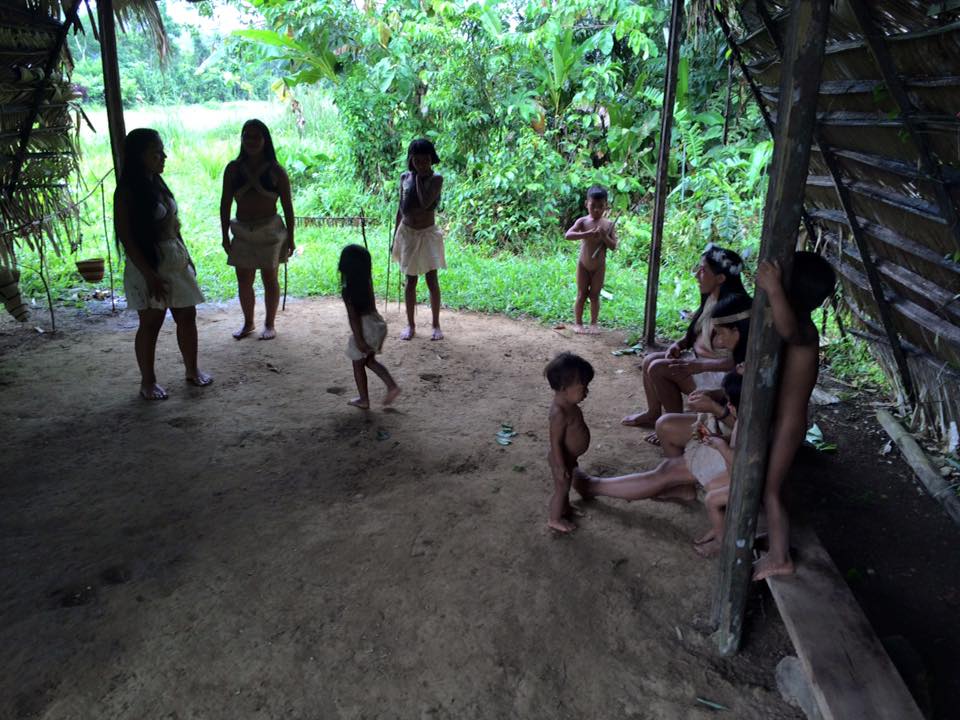Today Herman Melville is best known as the author of the literary classic “Moby Dick.” During his life, however, he was known as the man who lived amongst the cannibals. Melville was filled with wanderlust and an independent streak from a young age. Wanting to be free of family support and make a life for himself that included adventure and traveling a 20 year old Melville signed up to be a crew member on the Acushnet, a whaling ship that would go on an 18th month journey through the Pacific Ocean before Melville, sick of the long trip and the unfair treatment he thought the workers received, decided to escape the ship while it was docked in the Marquesas Islands of the South Pacific.

He and a fellow ship mate made their daring escape from the boat and headed for the hills of the tropical Island. They underestimated their ability to survive on their own in the wild though and after a few days found themselves hungry and without reliable shelter to protect them from the heavy rainfall. What they needed to do was to seek refuge amongst the Island’s natives. This was potentially problematic however, of the two main tribes that inhabited that Island there was the Happar, known for being friendly and cordial and then there was the Typee, by reputation a group of cannibals who would surely feast on the Americans white flesh if they so happened to run into them. There was no way of knowing which of the tribes they would encounter first, it was a life or death coin flip as far as they were concerned, but starving and cold they had no choice but to follow a beaten path through the forest that would inevitably take them to the village of either the Happar or Typee.
The path led to the Typee village. 
Miraculously, he was received by the locals with open arms. The duo were given food to eat, a thatched roof to sleep under and even a personal assistant. A man named Kory Kory helped Herman adjust to the leisurely life of those in the valley. One of Kory Kory’s duties was to carry Melville, who had injured his leg during his escape through the jungle on his back wherever he went. In fact, Melville was treated so well that he worried that the Typee might be fattening him up for better eating!
In reality Melville would spend three weeks living amongst the Typee before leaving the valley to return on the sea life upon another whaling ship. While he may have taken a few creative liberties in turning his adventure into the semi-autobiographical “Typee,” the work that he was most known for his during lifetime there can be little doubt that his description of the Typee people and their way of life is accurate. His account is corroborated by his fellow shipmate as being truthful and the descriptions of that Natives match those given by other explorers who had visited the Marquesas Islands.
Melville described the average day in the life of the Typee, which he said “Nothing can be more uniform and undiversified than the life of the Typees; one tranquil day of ease and happiness follows another in quiet succession.” The Typee were not early risers and would wake up well after the sun had risen. The first thing they would do is head on down to the stream and bath in the cool waters and fresh air, frolicking about for 30 minutes or so before heading back to the house for breakfast, which was a light affair consisting of fruit and coconuts. The residents of the house would sit around on the mats and engage in cheerful conversation as they ate. After this pipes were lighted and the tobacco smoke was passed around, although each person only took a few puffs.
From there people went their own way, some would go back to sleep, others would head out into the groves to collect fruit or fibres of bark. Some of the girls would spend time adorning themselves with flowers and lathering their bodies with oils. Men could use this time to sharpen their spears or carve some wooden design. After the morning’s light work, the afternoon was a time for a glorious siesta in which everyone partook. This usually last about an hour and a half before rising, and then another smoke before preparations for the largest meal of the day. Melville would often eat his afternoon lunch with the rest of the bachelors in a place called the “Ti” which was reserved for men only, the ‘savage’ version of a boys only club where he dined on roasted pork. “The Ti was a right jovial place. It did my heart well, as well as my body, good to visit it. Secure from female intrusion, there was no restraint upon the hilarity of the warriors, who, like gentlemen of Europe after the cloth is draw and the ladies retire, freely indulged their mirth.”
As evening approached Melville would take a canoe out on the lake with a pretty young native lady that he fancied or bath again in the waters stream with the others. When the sun went down, torches were lit and the natives gathered to engage in chanting, stories were told and ‘all sorts of social festivities served to while away the time. The young girls very often danced by the moonlight in front of their dwellings.” Finally, everyone would retire to the house where they slept, doze for a bit, before waking to eat the final meal of the day, pass around the tobacco pipe on more time before collapsing into a deep sleep. “The Native strength of their constitution is in no way shown more emphatically than in the quantity of sleep they can endure. To many of them, indeed, life is little else and an often interrupted and luxurious nap.”



